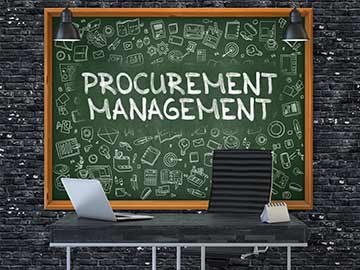Business owners are regularly in the market for new IT equipment. Maybe you just hired three new employees and they are starting in two weeks. Or you’re transitioning to a hybrid work environment and need new workstation set-ups for remote offices to match in-office settings. Perhaps the CFO or purchasing manager is fulfilling quarterly IT inventory refreshments. Or you’re replacing something that broke (yikes!)
Whatever the reason you’re in the market for new IT equipment, there is one common question we hear: “How fast can we get it?” The answer to that question, however, is getting more complicated.
The Perfect Storm – Global Chip Shortage + Skyrocketing Demand for IT Equipment
In our digital world, we have come to expect instant gratification. You click a link, and are immediately forwarded to your destination. You hit “Send” on an email message or “Enter” on a text message and eagerly await a response. You click a button on your phone app to turn the lights on while you pull into the garage. We are integrating technical components into more than just our computers, tablets, and phones. We now have smart appliances, smart homes, and smart cities. And we expect it to work in real time.
The result is a classic case of demand far outpacing supply. Technology advancements and automation, coupled with a worldwide pandemic that fundamentally shifted the way we live and work, have placed enormous strain on the supply of business technology equipment.
First, there is the worldwide shortage of semiconductor chips. These chips have made their way from servers, PCs, and other traditional business systems into a massive number of everyday items, like your car, doorbell, refrigerator, and watch. Add the demand for new equipment to enable 5G connectivity and the stress on manufacturers magnifies.
![]()
The trouble is the manufacturers producing these chips were already running at max capacity. They have no room to fulfill the increased demand brought on by the rising digital transformation. Many are already building new fabrication plants, or “fabs”. Intel, one of the world’s largest chip manufacturers, is building three new plants. However, those plants can take 18-36 months before they are operational. The supply problem isn’t going away any time soon.
While the supply is stagnant and shortages begin, the impact of COVID-19 on the way we work is also increasing demand for business technology equipment. As workers return to the office with business models in place, systems are often being refreshed or upgraded. A good amount of office workers are transitioning to hybrid work schedules where they work remotely some days and in-office on other days. This requires new technology, whether that be additional workstations, or peripherals like monitors, keyboards, mice, docking stations, power strips, etc. The demand continues to surge and the supply can’t keep up.
What Small Businesses Can Expect When Purchasing Technology Solutions
I recently attended a conference in which one of the panels featured representatives from Dell and Intel. Dell, as many know, sells PCs, computer peripherals like keyboards and mice, servers, etc. Intel is the largest semiconductor chip manufacturer. Both panelists spoke of the delays in shipping PCs, Chromebooks, and other high end mobile devices.
They are not alone. Many in the business world including Apple, Samsung, Cisco and more are all sending up alerts that product delays are growing longer and pricing increases should be expected. We have seen it in other types of businesses, including the automotive space, with some car manufacturers slowing production due to the inability to obtain the necessary technical equipment. But the impact will grow to virtually any market dependent upon technical systems, with smaller companies arguably bearing the brunt of it as their buying power is smaller compared to their enterprise peers.
The first impact your business will face is longer lead times. Right now, we are seeing lead times in excess of 6-8 weeks for business IT systems and we expect that will likely grow longer before it gets better. 
The second major impact that is just starting to hit the market is increased pricing. Demand drives pricing. With the increased demand, vendors are raising their prices. This is particularly frustrating for small businesses who lack the buying power of large companies. Enterprise organizations buying larger quantities regularly are going to get the best price and the fastest fulfillment.
What You Can Do to Minimize the Impact
There is no way to completely avoid the stresses of the supply chain shortages on your business’ technology procurement needs. However, there are things you can do to minimize the impact.
First, it’s more important than ever to plan ahead in terms of upcoming technology purchases. If you have an inventory replacement schedule, be sure to consider everything you will need for the remainder of the year to support your business processes. Get your equipment orders in early to ensure that you have the systems you require when needed. Even when an item is on backorder, it’s good to submit your order now to help vendors with forecasting and prioritization.
Secondly, be sure to take care of your existing equipment. If you work with Daystar, or another managed IT services provider (MSP), this should all be taken care of for you with proactive maintenance and support. If you don’t currently work with an MSP, implement a process to ensure your information systems are properly updated and patched on a regular basis. Making sure that systems are properly maintained will prevent future problems and extend the life of your equipment.
Lastly, small and midsize businesses could benefit from working with an MSP to make IT equipment purchases. MSPs have dedicated channels in which to obtain technology systems. They also have greater purchasing power as they conduct orders for many clients regularly over time. Their purchasing power and expertise in IT procurement channels may help you get a better price and a faster delivery.
The delays in the ability to obtain new IT equipment won’t go away anytime soon and will ultimately impact your business operations. It will take time for manufacturers to catch up with the increased demand. Between the rise in technology innovations and our increasing reliance on digital systems, that demand will continue to grow. Experts are estimating that it will likely take 18-24 months to stabilize the supply chain.
Businesses can’t avoid, but they can weather the storm by planning ahead, maintaining existing systems, and increasing the purchasing power.
















